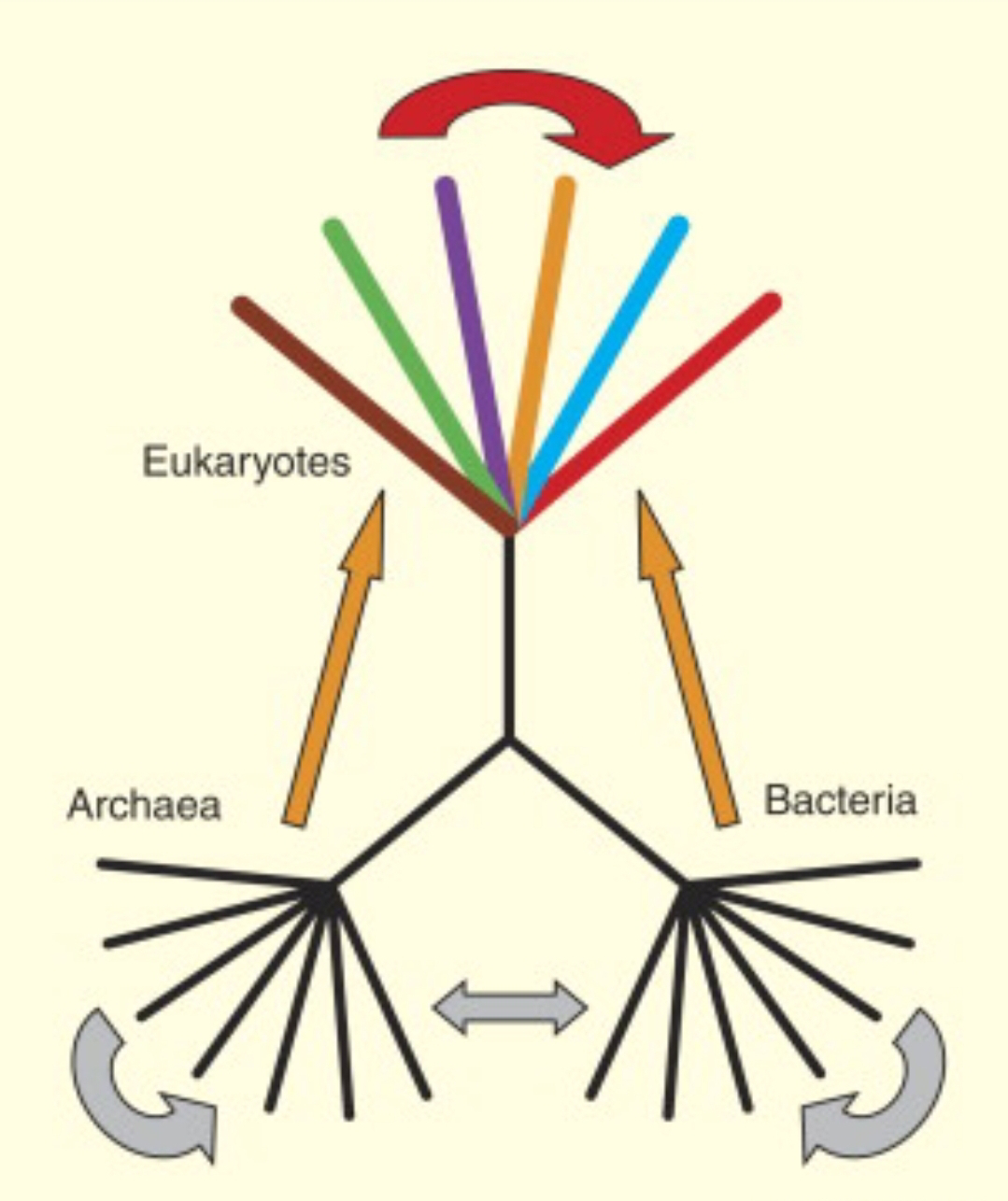Horizontal gene transfer leads to Convergent Evolution
Horizontal gene transfer (HGT) is the transfer of genetic material between organisms that are not parent and offspring. HGT can play a significant role in convergent evolution in animals in several ways:
Acquisition of Novel Traits:
Through HGT, animals can acquire new genes and genetic information from distantly related organisms. Horizontal gene transfer (HGT) has led to the acquisition of surprising traits in various animals:
Tardigrades: These microscopic creatures, known for their extreme resilience, have acquired numerous genes from bacteria, fungi, and even plants, contributing to their ability to survive harsh conditions like dehydration and radiation.
Sea slugs: Some species have incorporated genes from algae, allowing them to photosynthesize and gain energy directly from sunlight. This remarkable ability provides them with a significant advantage in nutrient-poor environments.
Aphids: These insects have acquired genes from fungi that enable them to produce carotenoids, pigments responsible for their vibrant colors and protection against harmful UV radiation.
Wasps: Parasitic wasps have integrated genes from viruses into their own genomes, utilizing these viral components to manipulate the immune systems of their hosts and ensure the survival of their offspring.
These examples demonstrate the significant impact of HGT on animal evolution, enabling the acquisition of novel adaptations and the exploration of new ecological niches.
These acquired genes confer an adaptive advantage in a particular environment. This can lead to the independent evolution of similar traits in different lineages, as seen in the convergent evolution of herbivory in arthropods, where HGT from bacteria has been shown to enhance the enzymatic repertoire of phytophagous insects.
Functional Convergence: HGT can introduce genes that perform similar functions in different organisms, even if those genes are not evolutionarily related. Horizontal gene transfer (HGT) can drive functional convergence by introducing genes with similar roles into unrelated organisms. This phenomenon challenges the traditional view of evolution as a strictly vertical process, where traits are passed down from parent to offspring.
For example, multiple unrelated bacterial species have independently acquired genes conferring antibiotic resistance through HGT. These genes often code for enzymes that break down or modify antibiotics, thus protecting the bacteria. Despite the diverse origins of these genes, their similar functions enable bacteria to thrive in antibiotic-rich environments.
Another striking example is the evolution of plant cell wall-degrading enzymes in various fungi and bacteria. These unrelated organisms have acquired genes enabling them to digest plant material, opening up new ecological niches and contributing to nutrient cycling in ecosystems.
These examples highlight how HGT can lead to the parallel evolution of similar functions in distant branches of the tree of life, driven by the selective pressures of shared environments or resources.
This functional convergence can lead to similar phenotypic adaptations in response to similar environmental pressures, thus contributing to convergent evolution.
Accelerated Evolution:
HGT can accelerate the pace of evolution by providing novel genetic variation. This can lead to the rapid adaptation of different lineages to similar ecological niches, resulting in convergent evolution.
Examples of HGT and Convergent Evolution in Animals:
Herbivory in Arthropods: HGT from bacteria has been shown to contribute to the evolution of herbivory in several arthropod lineages, including beetles, butterflies, and moths. The acquired genes encode enzymes that help these insects break down plant toxins and cell walls, enabling them to exploit a new food source.
Carotenoid Synthesis in Aphids: Aphids acquired the ability to synthesize carotenoids through HGT from fungi. This unique adaptation allows aphids to produce their own pigments, which are important for camouflage and protection against environmental stressors.
Antifreeze Proteins in Fish: Some fish species living in cold environments have acquired antifreeze proteins through HGT from bacteria. These proteins prevent the formation of ice crystals in their tissues, enabling them to survive in freezing temperatures.
Overall, HGT plays a crucial role in convergent evolution in animals by providing novel genetic material, accelerating the pace of evolution, and promoting functional convergence. By facilitating the acquisition of new traits and adaptations, HGT allows unrelated organisms to independently evolve similar solutions to shared environmental challenges.




Comments
Post a Comment